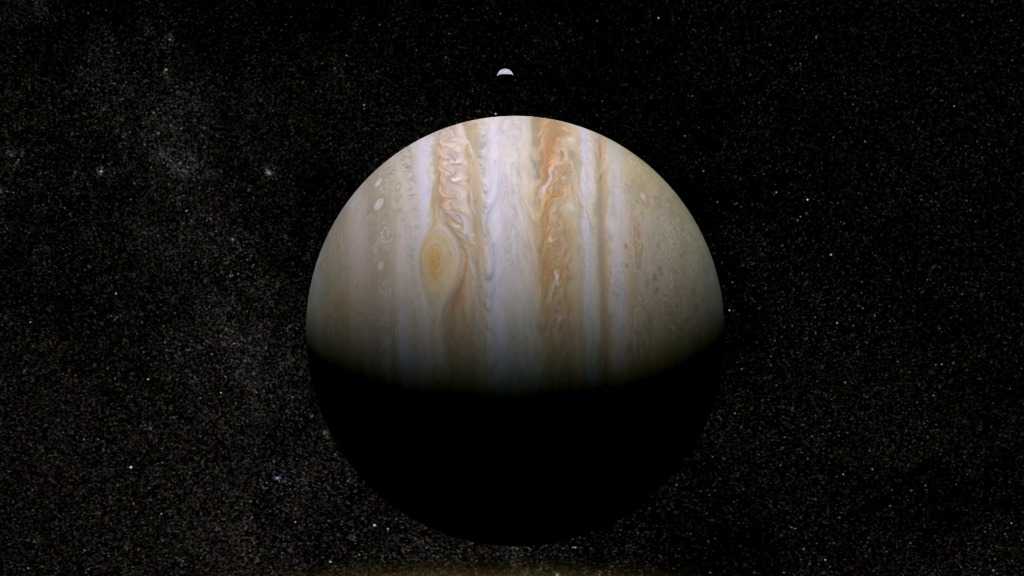Jupiter's Hot Spots
Jupiter is a planet known for clouds, from its distinctive orange and white stripes to the swirling vortex known as the Great Red Spot. But its cloudless patches are just as interesting—and so unusual that the big ones get the special name "hot spots." Exactly how they form and why they're only found near the equator have long been mysteries. To study hot spots in motion, scientists made movies from images taken when NASA's Cassini spacecraft flew past the planet in 2000. The movies reveal new evidence that Jupiter's hot spots are created by an atmospheric phenomenon known as a Rossby wave. As the wave glides up and down in Jupiter's atmosphere like a horse on a merry-go-round, it creates holes in the clouds by displacing cold air. This results in a line of cloud-free warm air pockets, or hot spots, seen around the planet. Watch the video to learn more.

Movies reveal the restless nature of Jupiter's shadowy hot spots and the force behind them.
Jupiter's hot spots, though constantly changing, are governed by an atmospheric wave, as explained in this video.

Hot spots, which appear shadowy at visible wavelengths, are openings that reveal deeper, warmer layers of Jupiter's atmosphere.

Hot spots are formed by a Rossby wave (yellow line) traveling up and down in Jupiter's atmosphere.

The wave pushes cold air down, breaking up clouds to form a hot spot. Warm air gets carried up, creating big cloud plumes between hot spots.

Typically, eight to 10 hot spots, about evenly spaced, are found in a line that stretches around the planet.

During its flyby of Jupiter in 2000, NASA's Cassini spacecraft spotted a line of hot spots about 7 degrees north of the equator.
For More Information
See NASA.gov
Credits
Please give credit for this item to:
NASA's Goddard Space Flight Center
Cover and Cassini image courtesy of NASA/JPL/Space Science Institute
Other images courtesy of NASA/GSFC/JPL/Space Science Institue
-
Animators
- Tom Bridgman (Global Science and Technology, Inc.)
-
Greg Shirah
(NASA/GSFC)
-
Ernie Wright
(USRA)
- Trent L. Schindler (USRA)
- Lori Perkins (NASA/GSFC)
-
Video editor
- Dan Gallagher (USRA)
-
Interviewee
- David Choi (Oak Ridge Associated Universities (ORAU))
-
Producer
- Dan Gallagher (USRA)
-
Scientist
- David Choi (Oak Ridge Associated Universities (ORAU))
-
Videographer
- Rob Andreoli (Advocates in Manpower Management, Inc.)
-
Writer
- Elizabeth Zubritsky (ADNET Systems, Inc.)
Release date
This page was originally published on Thursday, April 25, 2013.
This page was last updated on Wednesday, May 3, 2023 at 1:52 PM EDT.
